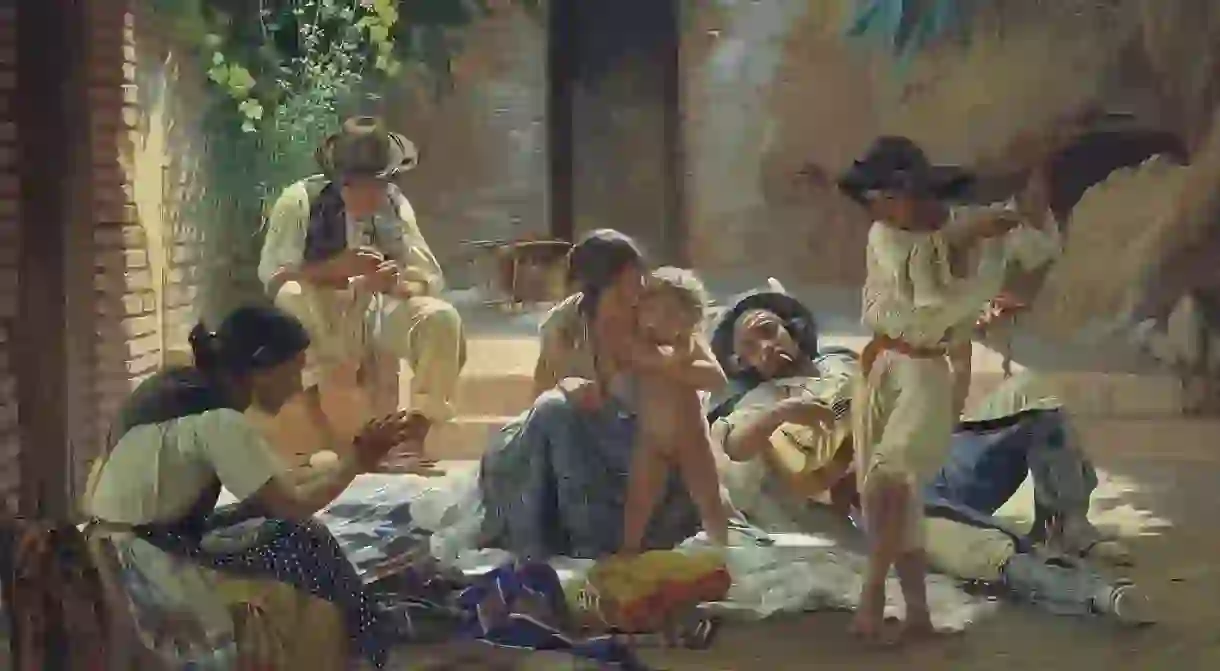Romani Heritage: A Glimpse Into Mexico's Misunderstood Gypsy Community

The history of the Romani people, often called Gypsies, is hard to track. Linguistically, they are believed by be descendants of the Indo-Aryan languages of Northern India, and their name is thought to come from the word dom, which means a man of low caste in Indian. Other DNA evidence collected in the 1990s leads scientists to believe that they migrated from South Asia, but many of the theories about their history are still conjecture.
What is known about the Romani population in Mexico is that many came on some of the early Spanish voyages from the Old World to settle on American soil, and some had faced persecution throughout their long history as wanderers, mystics, and musicians.

The first big wave of Gypsy immigrants to Mexico took place towards the end of the 19th and at the beginning of the 20th century. They arrived in southern cities like Veracruz and in the southeast part of Mexico City. This was around the same time that Romani immigrants were also arriving in the United States and Brazil. They came from Hungry, Poland and Russia, and some are believed to have traveled up from Argentina to Mexico on their way to the United States in the mid-20th century.
The years between World War 1 and World War II saw many Romanis abandon Hungary, leaving for Mexico and Venezuela. In the 1930s, an immigration law was passed to limit their travels to Mexico, because they were often believed to be criminals and petty thieves.
The last great migration of Gypsies to Mexico was in the 1960s in an exodus from Spain. At this time, they mainly settled in Mexico City and dedicated themselves to selling textiles and furs. There are currently communities in Veracruz, the south of Puebla, the northwest of Guadalajara and the north of Monterrey.

This group of people has no ties to a homeland, in the way that many immigrants do. They are bound to their ideals of freedom and their strong clan connections, so much so that many groups of Romani from different parts of the world have little to do with one another, even if they once lived in the same country.
Within the communities, men and women often marry young, and then only with other Romanis. Sexual purity for women and a sense of loyalty to their clans are fundamental principles that remain important to the Romani people.
Despite their insular communities, this minority group has made its mark on Mexican culture. For decades, the Gypsies of Mexico traveled the countryside, selling their wares, performing for crowds, and promoting films with traveling movie trucks that they would transport from small town to small town, back in a time when there were few movie theaters in rural Mexico. In the country’s capital, they settled in the Colonias Juarez and Del Valle, where they dedicated themselves to selling textiles and other wares and promoting dance and music from around the world.
There are have been several books written about the Romani people, including Ricardo Pérez’s La Lumea de noi. Memoria de los ludar de México, in which Pérez describes the community’s vision, their origin, and their participation in the making of Mexico. Mexican photographer Lorenzo Armendariz, after finding out about his Gypsy roots, lived with Gypsy communities and documented their lives through photographs.
Like many minority groups, they have faced discrimination and persecution for their embracement of nomadic life and their unwillingness to adapt to local customs and mores. Their leaders have been assassinated and their communities can be fraught with strife, but still they continue to hold fast to their ideals and remain another fascinating facet of Mexico’s multicultural society.
Discover the most awesome native animals you can see in Mexico.













